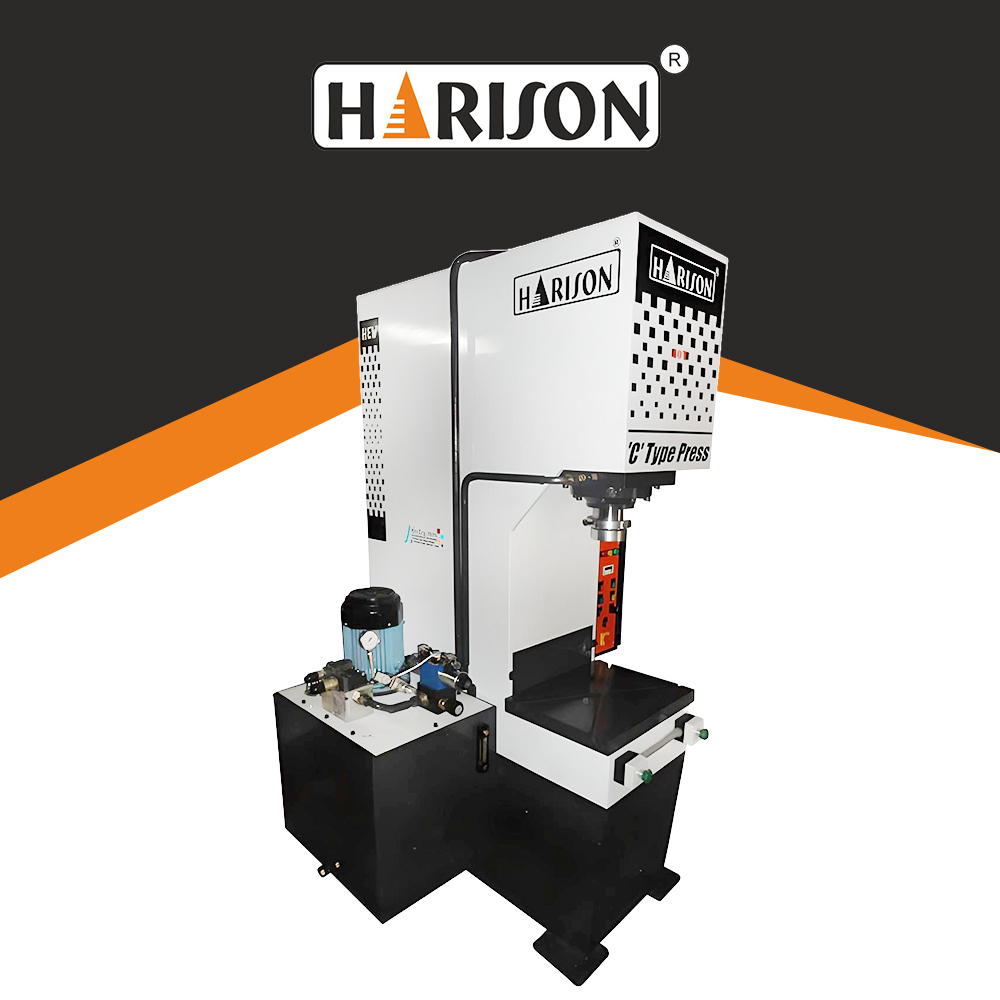The Basic Guide to Hydraulic Press Machine

Strong 8k brings an ultra-HD IPTV experience to your living room and your pocket.
A hydraulic press machine is a device that employs hydraulic fluid to create compressive force to shape and change various materials such as metals, plastics, and rubber. It works on Pascal's principle, which distributes pressure equally throughout the fluid. Hydraulic presses are widely utilized in different industries for processes such as forming, stamping, forging, and molding.
A hydraulic press has several applications in industries. It performs the job by generating compressive force using a hydraulic cylinder. The machine comprises a plate that holds the workpiece for sample processing. It also features a piston that acts as a pump, imparting mechanical force of modest size to the limited region of the sample. For applications requiring higher force magnitudes, bigger diameter pistons are suggested. The press functions based on Pascal's law, which states that when pressure is applied to a confined fluid, the pressure changes throughout the fluid.
Molding, blanking, punching, forging, deep drawing, and metal shaping are among the most common applications for hydraulic presses.
Structure of Hydraulic Press Machine
Hydraulic presses are divided into two categories based on the direction of force: vertical and horizontal hydraulic presses. Except for a few exceptions, such as those used in extrusion, most presses have a vertical construction.
A hydraulic press structure may consist of two, four, or eight columns, a welding frame, or a multi-layered steel strip winding frame. C-frames are commonly seen in medium and small vertical hydraulic presses. It is open on three sides and easy to handle.
The oil cylinder is placed on the upper beam of a vertical transmission four column-free forging hydraulic press, while the plunger is securely coupled to the movable beam. The vertical column serves as a leading path for the movable beam, moving higher and downward due to the pressure of the working fluid. Hydraulic presses also have a workbench attached to a beam in their frame that reciprocates. Upper and lower anvils are positioned below the movable beam and worktable. The majority of the working force is directed at the frame, which consists of upper and lower beams and columns.
What types of hydraulic press machines are used?
Using hydraulic fluid in your production process is inexpensive and has no detrimental impact on the environment.
Hydraulic fluids also require a reservoir and an efficient method of transporting the liquid to its destination. This is when the power of positive press comes into play. Water-based systems are commonly employed in hot metal regions in steel mills.
There are numerous sorts of hydraulic systems to select from, including normal and water-based models. Water-based systems are commonly utilized for hot metal processing and longwall mining applications. In the great scheme of things, water-based systems cost less than oil-based ones. Using an oil-based fluid requires a trip to the tank to redirect the liquid.
Cylinders in a hydraulic press machine.
A hydraulic press is designed to sculpt and compress metal and other materials. It may shape components, crush waste, and even bend and stamp a product. It is commonly utilized in the production of automotive components, as well as in industrial manufacturing.
A hydraulic press machine generates mechanical force from liquid pressure. These presses are primarily used to shape and compress materials, and they can exert forces of up to 150 pounds.
What are the advantages of Hydraulic Press Machines?
There are a variety of hydraulic press drive systems available. The key benefit of utilizing this gadget is that it automatically increases or decreases pressure based on the amount of labor force necessary. It can also help reduce electrical energy use. It is also useful in larger hydraulic presses.
Hydraulic presses are used for a variety of activities. Bending, straightening, forging, and processing polymers, metal, rubber, wood, and powder metallurgy are a few examples of uses. It is also suitable for ordinary pressing operations such as sheet metal component stamping, drawing, and shaping.
What are the applications of a hydraulic press?
Hydraulic presses are used in several sectors and industrial processes. These presses are an effective way to apply pressure to a broad variety of components. They are particularly well-suited to the production of big, complicated components.
Hydraulic presses may be used to make truck beds, car parts, and even roofs for homes. These presses are suited for a variety of heavy-duty applications, including forming, bending, and straightening components. They are also utilized for plastic bending, metalworking, and forging.
For example, a hydraulic press can be controlled manually to produce more constant force. PLC or PC control systems, on the other hand, can be used to operate a more complex press.
Hydraulic presses have several applications, but they are ideally suited for high power and pressure. They can be used to forge metal, shape plastics, and compress specialized waste materials.
The Bottom Line
The hydraulic press machine is a critical component of industrial activities. It manufactures high-quality components and assemblies and is frequently used to shape and compress metals. It is also employed in the manufacturing of sophisticated electrical components. Hydraulic presses may be customized to fulfill the particular requirements of every business. They are adaptable and cost-effective.
Note: IndiBlogHub features both user-submitted and editorial content. We do not verify third-party contributions. Read our Disclaimer and Privacy Policyfor details.


